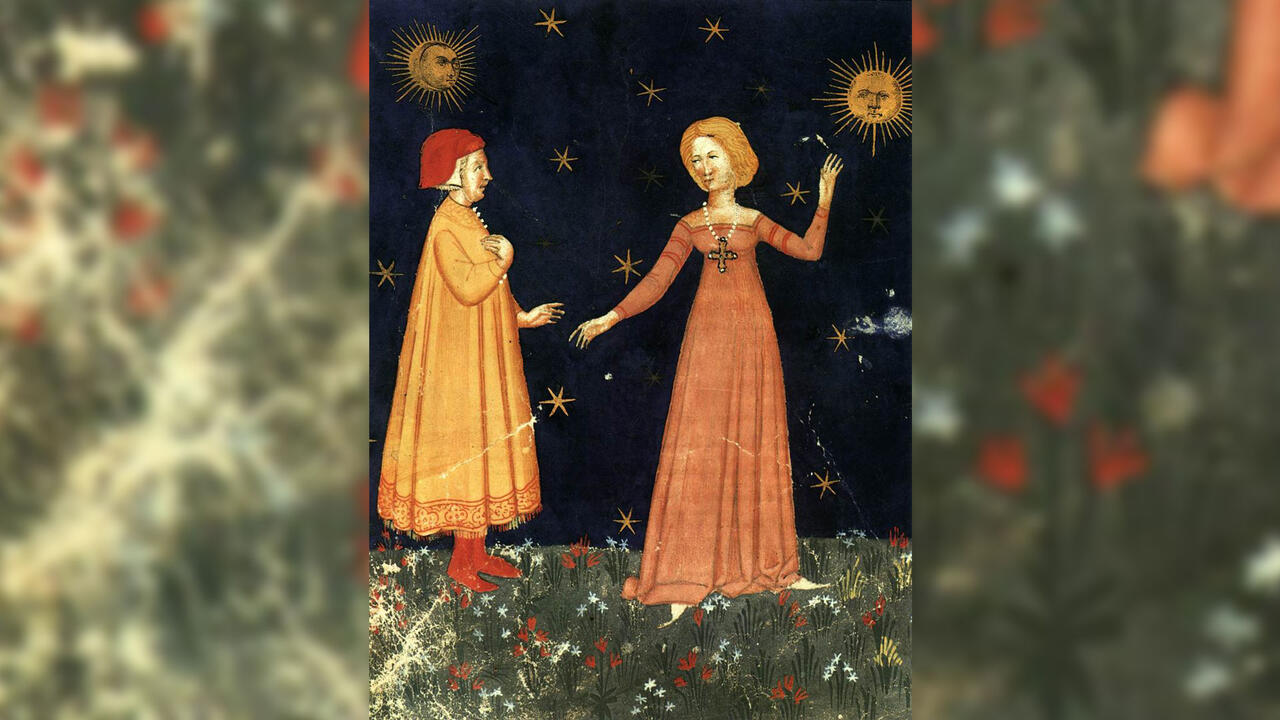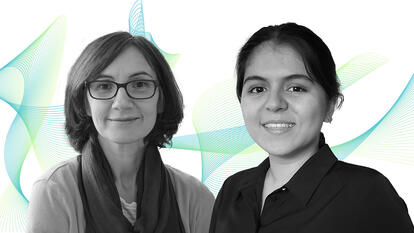
Students Recover the Women of the Divine Comedy For a Wikipedia Project
The women in the Divine Comedy, the epic poem by the Italian writer Dante Alighieri, served as symbols and metaphors of political affiliation, intrigue, virtue, scandal, and violence. Centuries later, though, little is known about many of the women Dante included in his seminal work. Laura Ingallinella, a Mellon postdoctoral fellow in Italian studies and English at Wellesley, and her students have worked to change that.
This year marks the 700th anniversary of Dante’s death, and scholars of the famed poet around the world have been celebrating with virtual exhibits, performances, conferences, and many other initiatives. Ingallinella taught the poem—which explores the Christian afterlife in three parts: “Inferno,” “Purgatorio,” and “Paradiso”—in the third spring term and created a project for her students to celebrate the septuacentennial: write the women of the Divine Comedy back into history. The project included working with Wiki Education to use Wikipedia as a pedagogical space. The students researched female characters of their choosing and wrote Wikipedia entries.
Ingallinella said she always reads Dante’s work with an eye to how he presents underrepresented communities. “The goal is not just to approach this big author’s text in terms of monumentalizing it, but to approach it from marginalized perspectives,” she said, noting she’s also taught Dante’s work with a focus on diversity and cross-cultural encounters, with important discussions on the medieval roots of antisemitism and anti-Muslim sentiment. While the cluster of historical women appearing in the Divine Comedy is small compared to the hundreds of male characters featured in the work, Ingallinella said that they are significant because Dante represented their experiences for commentary on politics, history, morality, violence, and more.
Ingallinella said Dante gave these women to his readers and to posterity, but what he often didn’t do was give them their own voices. Many women of the Divine Comedy receive only one line in the poem, and more often they are referred to as relatives of male speaking characters, “so there’s still that type of marginalization,” Ingallinella said.
That limited reference daunted Kate Winkler ’23. Winkler researched and wrote about Gualdrada Berti, a member of the nobility in 12th-century Florence. “She is mentioned in one line in the ‘Inferno,’ and that scared me,” Winkler said. She delayed starting her research because she thought there would be nothing to find. “She’s not even, like, directly mentioned,” she said. “Her grandson [Guido Guerra] is a character in one circle of hell, and Dante meets him, and he’s basically just described as the grandson of ‘the good Gualdrada.’ And that’s the extent that we see Gualdrada in the entirety of the Divine Comedy.” She said when she started her research, she was able to find more information about the noblewoman than she anticipated.
It’s not just that many of the female characters were not given speaking roles, Ingallinella explained. Women from the medieval period are “rarely present in historical records, so the students, by virtue of their research, have worked to center individuals that have been systematically marginalized.” However, while female characters are most often used as points of reference for the male characters, at the other end of the spectrum, “you have these compelling, nuanced portrayals of femininity… that you don’t find that often in texts written by male authors in the medieval period,” she said.
“...you make the Divine Comedy come to life when you consider Dante, not just as the author of a masterpiece, but as a human being who was situated within a very specific historical context.”
Laura Ingallinella
An example is Pia de’ Tolomei, an Italian noblewoman who was murdered by her husband and appears as La Pia in “Purgatorio.” Ingallinella describes her as mysterious and a character who is “so complex, scholars are still debating over her words.” Huda Saeed ’23 focused on La Pia for her research and noted that while Dante seemed progressive in some parts of the Divine Comedy, bringing into the poem women who were victims of domestic abuse, for example, in other parts, he perpetuated more conservative views held in medieval Europe. “Dante is extremely Islamophobic and violently imperialistic in his endorsement of the Crusades,” she said. “One thing you should take away is, you know, look at it holistically. The Divine Comedy is very multidimensional. He shed light upon crimes that really did happen, or may have happened, but, at the same time, it is important to read his work with a critical eye.”
Dante was entrenched in 14th-century politics and religion, and in the prejudices of his time. “I feel that you make the Divine Comedy come to life when you consider Dante, not just as the author of a masterpiece, but as a human being who was situated within a very specific historical context,” Ingallinella said.
Etsegenet Tsega ’22 wrote about Alagia Fieschi, a woman who remains virtuous “despite being surrounded by corrupt family members,” Tsega wrote in an email. “She is also among the women in the Comedy whose prayer contributes to one’s salvation.” In her research, Tsega learned that Fieschi came from a powerful family, had five children, and married into a noble family. “It can be inferred from some historical records that she was economically engaged in transactions with both her family and others,” she wrote. “This indicates she was an independent and influential woman.”
“These are really amazing and powerful stories that, from just a little bit of research, I felt so excited by,” Winkler said. After she completed her Wikipedia page on Gualdrada, she sent the link to everyone she knew, suggesting they read it. “I thought she was so cool,” Winkler said. “I wanted to hear more about her in ‘Inferno.’ I think Dante missed out. I think it would be really cool if people just continued to tell the stories of the people that maybe he missed out on.”
The students wrote entries for 15 women and two queer characters, and now the stories of these under-recognized figures are available to anyone via Wikipedia, including scholars who can continue adding more information. Ingallinella said a month after the course ended, the class entries had 150,000 views.
Ingallinella said that for her, a highlight from this project was when a student said, “I finally got to know her,” referring to the woman the student had researched from the poem. Ingallinella said that comment represented the scope of the project—starting with the Divine Comedy, but then “digging into historical and literary sources to center a marginalized group, and seeing where Dante got it wrong and where he got it right … with this project, each student got to know intimately someone other than Dante, someone that Dante had used as a source of inspiration but who also left a precious footprint in history.” She said for students to forge a connection with a “minor character in a poem made of 100 canti, that was beautiful. That was something that I will take with me.”



